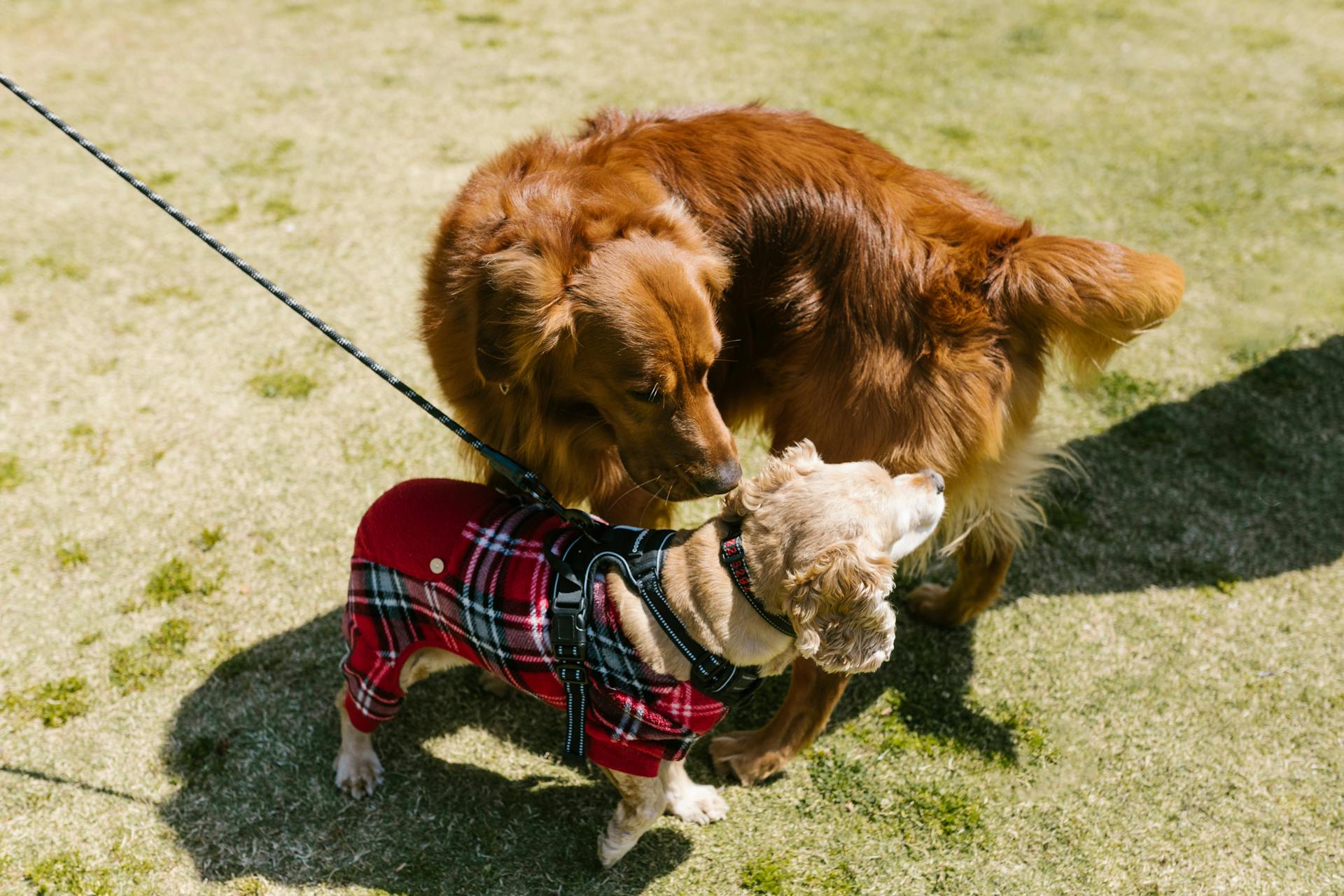Courtesy of the many medical advances made in the field of veterinary medicine, our canine companions nowadays lead longer and healthier lives. While a longer lifespan sounds like a great thing, it can be both a blessing and a curse, as behavior problems in old dogs often arise, posing challenges for pet owners.
A longer lifespan is a blessing because we get to enjoy the company of our dogs for longer. Time flies when our dogs are puppies, and then we fast forward a few years and suddenly wake up to our dogs being suddenly considered seniors.
Despite their white muzzles and achy joints, we want our dogs to be around us for as long as possible, so we do our best to feed them the best diet, exercise them, and ensure they don’t miss those twice-a-year senior wellness exams.
While every single day that we get to enjoy our senior dogs feels like a gift, something that we have to accept is that, with a longer lifespan, come more physical and behavioral challenges. Oftentimes, these problems are chalked up to being a normal “sign of aging,” but are all behavior problems in older dogs truly signs of just getting old?

How Does Aging Change a Dog’s Behavior?
As dogs get older, their bodies start deteriorating, with the potential for organs failing, tumors spreading, and a general weakening of the dog’s body and immune system.
Along with these changes, older dogs may no longer tolerate certain things, giving the impression of them developing a “short fuse” and no longer being able to handle stress as they used to.
Paying close attention to these changes is important because behind what may look like a dog “just getting old,” there may be some underlying medical problems lurking.
Taking a proactive approach is therefore important, as the earlier you notice that something is “just not right,” in general, the better the prognosis, as early intervention can make a difference in the outcome.
Did you know? Dogs suffering from kidney failure may not show any signs of trouble until it’s too late and they have lost at least 66 to 75 percent of their kidney function.
What Are Some Common Behavioral Issues in Older Dogs?
Behavior problems in older dogs may be a sign of normal aging, but it’s important to investigate them as they may be a sign of an underlying medical issue or the initial signs of cognitive dysfunction syndrome. If your senior dog’s behavior is changing, please don’t hesitate to have your dog see the vet to exclude these possibilities.
Behavior Changes Due to Cognitive Dysfunction Syndrome (CDS)
Cognitive dysfunction syndrome is often presented in a very light form, causing pet parents to often miss recognizing the early signs. This causes delays in initiating treatment, which can ultimately help slow down its progression and improve the dog’s quality of life.
Signs of CDS may mimic those seen in people suffering from Alzheimer’s disease and may include the following:
Disorientation
The dog appears confused, forgets trained cues, gets stuck in corners, or gets lost in familiar surroundings. May stare blankly and appear “spaced out.” Sometimes they may fail to recognize people or pets living in the home with them.
Aggression
The dog appears more irritable, has a decreased tolerance for frustration, and may react aggressively when around people or other pets. There may be less interest in social interactions.
Anxiety
The dog may start pacing, barking, and whining. He may overreact to sounds, sights, and smells or become startled when being touched. He may develop new fears and phobias and become particularly clingy.
Changes in Sleep/Wake Cycles
The dog may wake up at night and start pacing around, possibly vocalizing. He may sleep more during the day.
House Soiling Issues
The affected dog may show signs of regression in his potty training and may start having accidents inside the house.
Behavior Changes Due to Medical Problems
- When an older dog manifests behavior changes that are uncharacteristic for the dog, these should be investigated for underlying medical problems.
- Dogs suffering from neurological issues may develop personality changes from accidents in the house to repetitive behaviors such as circling, licking, and snapping (as if catching imaginary flies).
- Low thyroid hormones (a condition known as hypothyroidism) may lead to lethargy and increased irritability.
- High cortisol levels are associated with Cushing’s disease, which may trigger a voracious appetite, accidents around the house, and waking up at night.
- Kidney failure may lead to inappropriate urination and waking up at night, while heart failure may cause exercise intolerance, increased panting, and difficulty sleeping.
- Digestive issues may lead to increased licking of surfaces, eating non-food items, lowered appetite, and accidents in the house.
- Urinary tract problems may lead to increased frequency of peeing, waking up at night, and licking the private area.
- Diabetes may cause increased drinking, waking up at night, and house soiling. Diabetes may also often lead to urinary tract infections.
- Oral pain may cause dogs to drop food, push their bowls around, or show signs of inappetence (a lack of appetite or a reduced desire to eat).
- Ear pain may cause dogs to become hand-shy or react aggressively when touched over the head.
- Pain in general can cause the dog to become withdrawn, irritable, and aggressive, especially if touched.
Behavior Changes Due to Vision or Hearing Loss
As dogs age, their hearing or vision may decline and so may their ability to smell. These sensory changes may cause dogs to feel more insecure, which may lead to becoming clingier and needing help navigating their environment.
Ways to Help Improve a Senior Dog’s Life
The following are several tips that may help improve your senior dog’s life.
- Have your pet see the vet at least twice a year, or earlier if you notice behavior problems in your older dogs or physical changes or concerns.
- Feed a healthy diet and any necessary supplements
- Provide environmental enrichment in the form of play, food puzzles, sniffing opportunities, and training.
- Maintain a structured routine
- Use non-slip mats, toe treads, and other methods to prevent old dogs from slipping
- Create an environment conducive to sleep by providing a quiet area, orthopedic beds, and a nightlight for dogs with poor vision
- Be patient and supportive. Avoid showing any signs of impatience or frustration.
- Consult with a behavior specialist if you are dealing with complex behavior changes. Through desensitization and counterconditioning, they can help work through any fears or phobias.
References:
- Harvey ND (2021) How Old Is My Dog? Identification of Rational Age Groupings in Pet Dogs Based Upon Normative Age-Linked Processes. Front. Vet. Sci. 8:643085. doi: 10.3389/fvets.2021
- Decoding Your Dog, Explaining Common Dog Behaviors and How to Prevent or Change Unwanted Ones




